How to Check Tread Depth
A 10-step guide into checking the tread depth of your tyres.
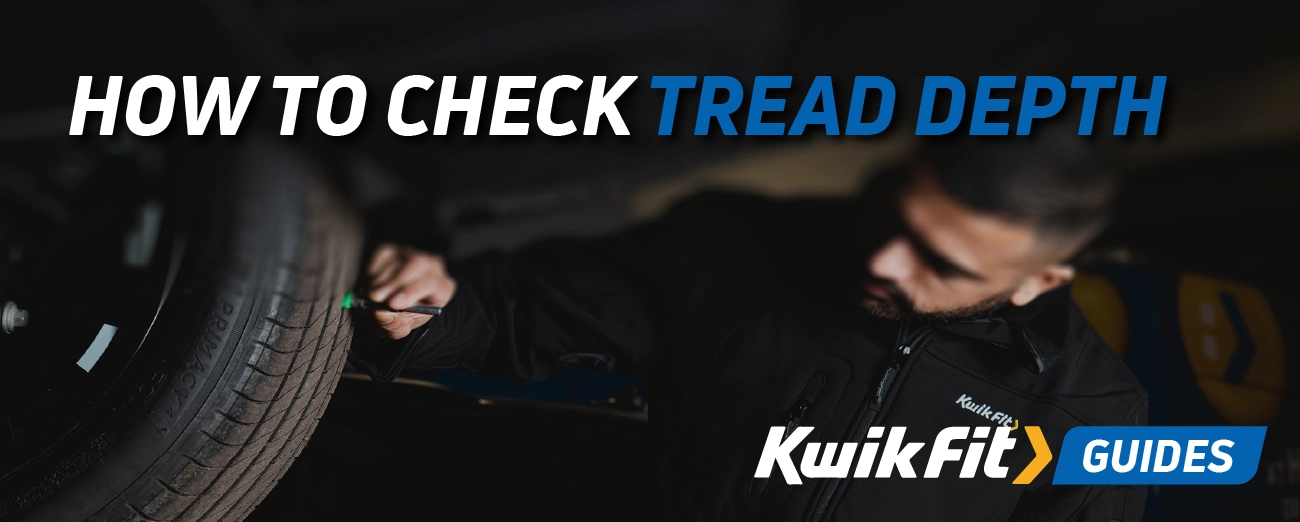
- Keep a 20p coin in your car for quick tread checks.
- Ensure your car is on a flat surface before checking.
- Look for the main tread channels on your tyre.
- Place the 20p coin into the tread grooves at different points around the tyre.
- If the outer band of the coin is visible, your tread is too shallow and likely illegal.
- Perform the 20p test on each tyre to ensure consistency.
- If your tyres have Tread Wear Indicators (TWIs), check if the tread is level with them.
- If your tread is below 1.6mm, replace the tyres as soon as possible.
- Check your tyre tread depth weekly or before long journeys.
- If youíre unsure about your tread depth, visit a professional for advice.
As one of the UKís leading tyre experts, weíve been providing the UKís motorists with tyre advice to keep them safe on the road for decades now Ė from how to repair tyres to tyre pressure guidance.
What is the most important piece of tyre advice we give drivers though?
Pay attention to tread depth.
As your tyres are the only point of contact between your vehicle and the road, it is crucial that they are in good condition for vehicle, driver, and passenger safety. However, drivers often donít realise the importance of tread depth and ensuring that it is maintained.
In a survey undertaken in 2020, a staggering 69% of drivers questioned were not aware of the legal minimum tyre tread depth for the UK! If youíre included in this percentage, this blog is for you.
Weíll not only outline the importance of tread depth and how to avoid a tyre-related fine or penalty points on your licence, but weíll also provide you with a quick, easy trick to check your tyre tread depth at home ó the Ď20p testí.
Tyre tread depth explained
Letís begin by getting a better understanding of tyre treads.
Tyre tread refers to the grooves you find on your tyres, designed to remove water from the road, enabling your vehicle to better grip the road surface. Without tyre treads, youíd struggle to control your car as it would become very slippery indeed.
Think Formula 1 cars driving on slick tyres (which have no tyre tread) in the rain Ė they skid and slide uncontrollably off the track so have to pit quickly to change to intermediate or wet tyres.
Why is tyre tread depth so important?
If, like so many drivers, youíve been putting off that tyre change because you canít find the time or perhaps are downplaying the severity of a bald tyre, here are 3 reasons why tread depth is so important.
1. Improved stopping distances
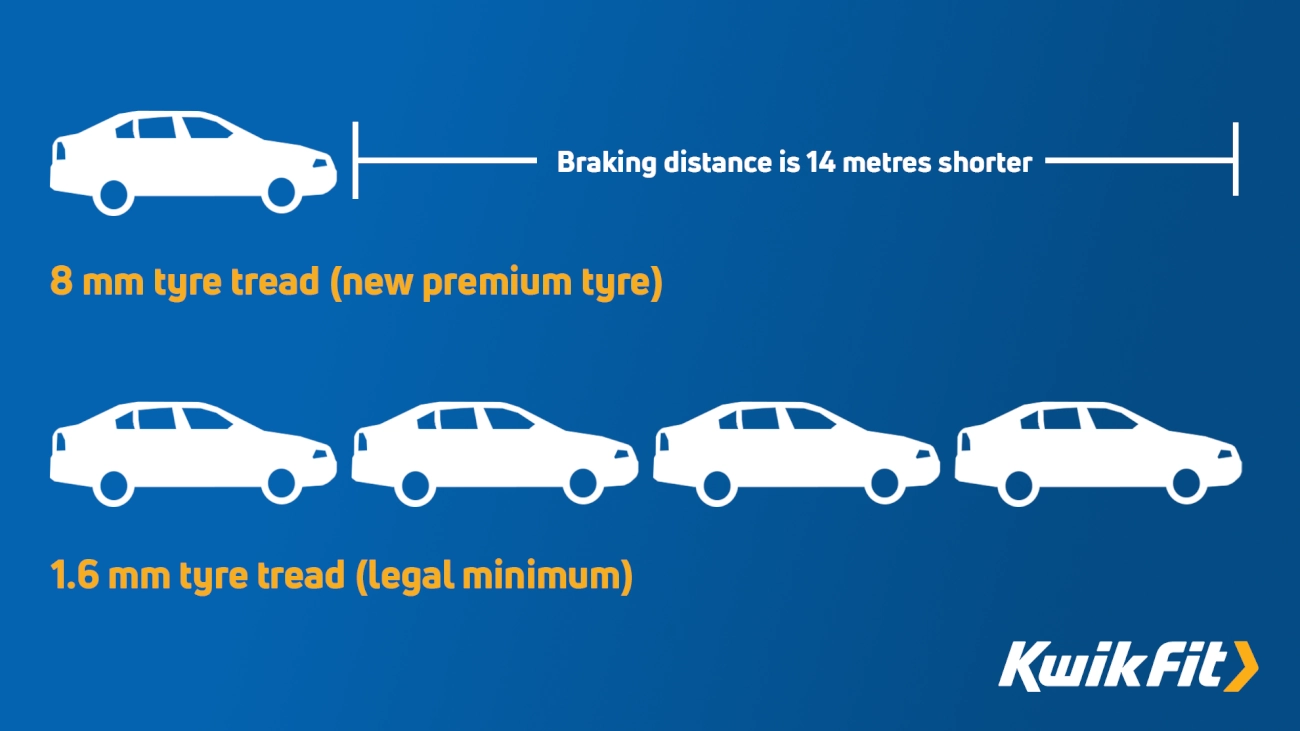
In the event of an emergency braking manoeuvre, your car relies on your tyre tread to grip the road and come to a stop in the shortest possible distance.
Braking distance is directly correlated to tyre tread depth so, as your tread wears out, grip decreases and braking distance increases. To make matters worse, your stopping distance will increase still further when driving in wet conditions. Which brings us neatly ontoÖ
2. Improved aquaplaning resistance
Tyres have to work much harder when driving on wet surfaces in order to prevent aquaplaning. Aquaplaning occurs when the water between your tyres and the road surface cannot be displaced quickly enough resulting in the driver losing control of the vehicle.
If your car begins to aquaplane, you wonít be able to steer or brake until your tyres regain contact with the road. Itís a scary experience but one that can be avoided by checking your tread depth.
Tyre tread doesnít just help to grip the road, the tread pattern is designed in such a way to remove water from the road surface as you drive. Typically a tyre with adequate tread can displace enough water to fill a bucket every 7 seconds Ė thatís a lot of water!
But, as your tyre tread becomes worn, so too does its ability to evacuate that water from the road which greatly increases the chances of aquaplaning. The more tread depth you have on your tyres, the more they can clear water from the road surface, and the better grip youíll achieve. Simple as that.
3. Illegal tyres could mean costly fines and risk of conviction
Driving with tyres under the legal tread limit isnít just a safety risk, itís against the law. If you are pulled over by the police and your tyre tread is below the legal limit you could be fined up to £2,500 and be landed with 3 penalty points on your licence!
As an example, according to the Ministry of Justice, more than 10,000 drivers in England & Wales ended up in court in 2012 due to defective tyres. Whatís more, if you are convicted of using a vehicle with defective tyres, your insurance premium could go up by as much as 69%.
Can you really afford to take the risk?
Low tyre tread depth: Staying road legal
When you purchase brand new tyres from Kwik Fit, they typically come with 8 mm of tyre tread. However, over time (depending on your driving style, the distances you travel, and how often you drive) your tyresí tread depth will reduce through natural wear and tear. As it does, so will your tyresí ability to grip the road surface.
Thatís why tyre experts and leading premium tyre manufacturer, Continental, strongly recommend that you replace your tyres before they reach the UK road legal tyre tread depth minimum of 1.6mm.
Why? Because we believe this minimum depth is too low. Weíre continuously campaigning to have this minimum tread depth level increased. Our position is based on the undisputed fact that below 3mm of tread depth, independent testing has conclusively proven that a tyreís ability to grip the road surface dramatically deteriorates, consequently exposing UK drivers to an increased risk of accidents.
Tread Wear Indicators
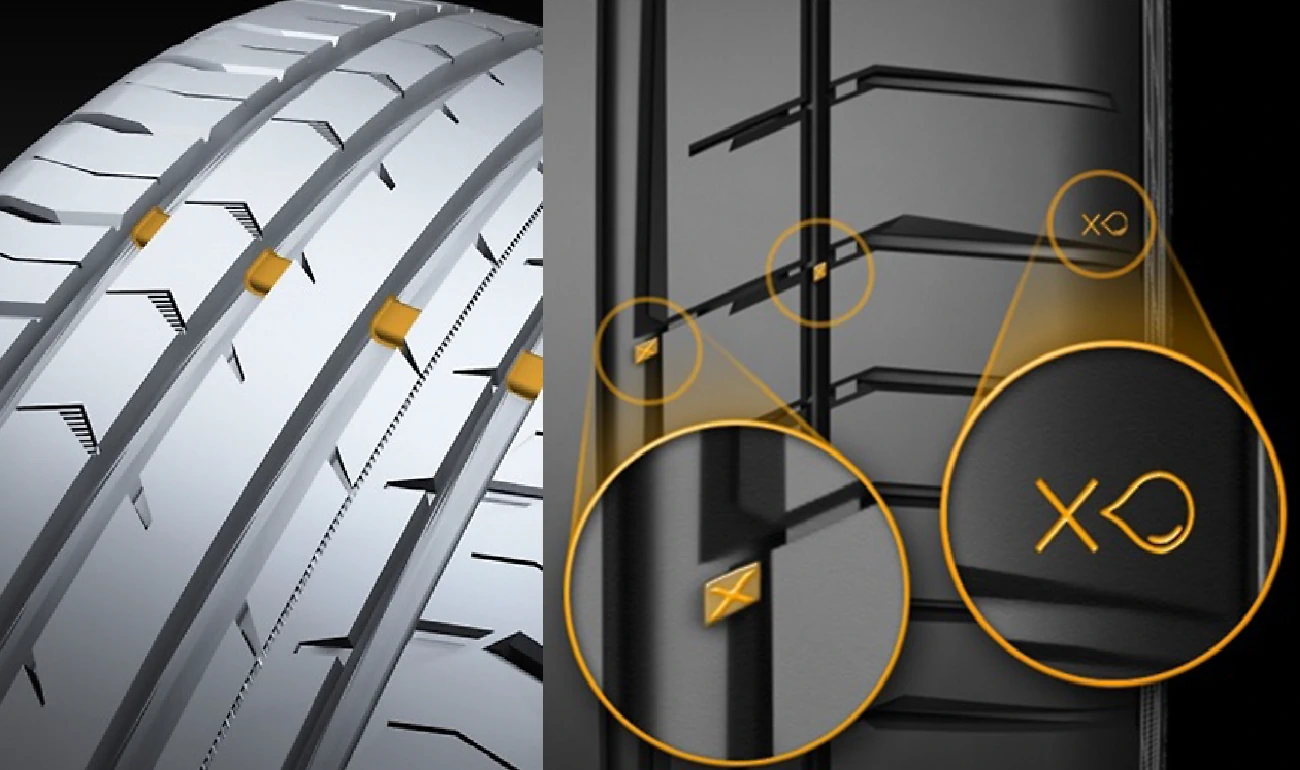
So, exactly how can you stay UK road legal, ensuring that youíre always aware of what your tread depths are? How can you tell when itís time to replace your tyres?
Some tyre manufacturers, like Continental, have incorporated handy Tread Wear Indicators (TWIs) within their products. These markers are always visible but set below the level of the original 8mm of tyre tread. Over time, as your tyre incurs natural wear and tear, the tread depth will reduce to the point where itís level with the TWI. At this point, itís an easy indication that the tyre should now be changed.
With Continentalís tyres, there are two sets of TWI Ė at 3mm (Continentalís recommended depth to change your tyres) and at 1.6mm (the UK road legal minimum).
But what if your tyres donít have Tread Wear Indicators?
The 20p tyre tread depth test
TWIs are very useful, but thereís an easy way to check your tyre tread depth quickly if you donít have tyres with this feature: the 20p Test.
This very simple, yet ingenious, testing method offers UK drivers a handy way of checking their tyre tread depth weekly or before a long journey, using just a single 20p coin.
So, if you donít have a tread depth gauge we recommend that you keep a 20p coin in your car at all times. That way, youíll always be able to check your treads whenever you feel the need or are concerned about your tyres.
How to do the 20p test
Use the very simple steps below to check your tyres:
- Simply place the coin in the main tread channels of your tyres multiple times, at various points around the tyre.
- If you can see any part of the outer band of the coin face, it means the tyre tread is too shallow Ė and probably illegal. If this is the case, itís not only time to stop everything and replace your tyres, but itís also vital that you do so as soon as possible.
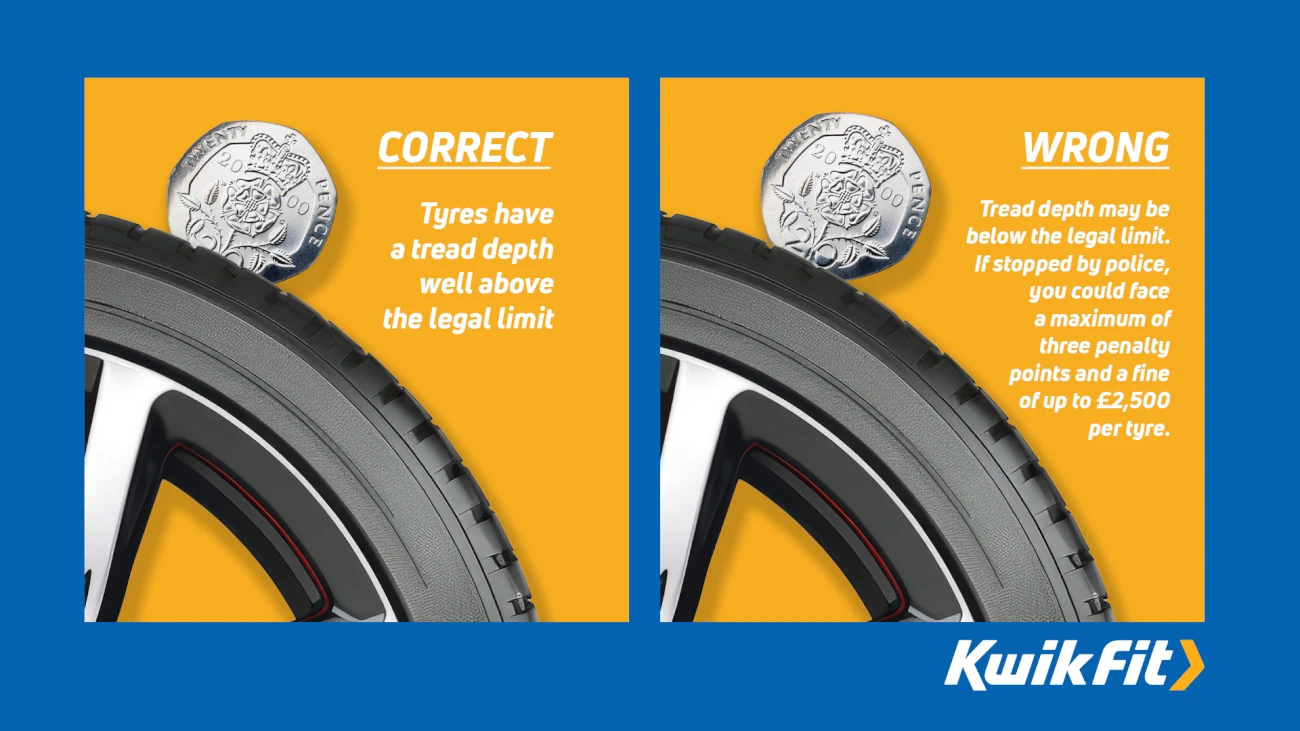
Speak to the experts at Kwik Fit about tyre tread depth
If youíre unsure about tyre tread depths, unsure if yours make the grade, or have any questions about the 20p test, get in touch with the tyre professionals at your local Kwik Fit.
Our dedicated team can provide you with unrivalled tyre advice, offer you expert fitting solutions, and ensure you fit the right tyres for your car.
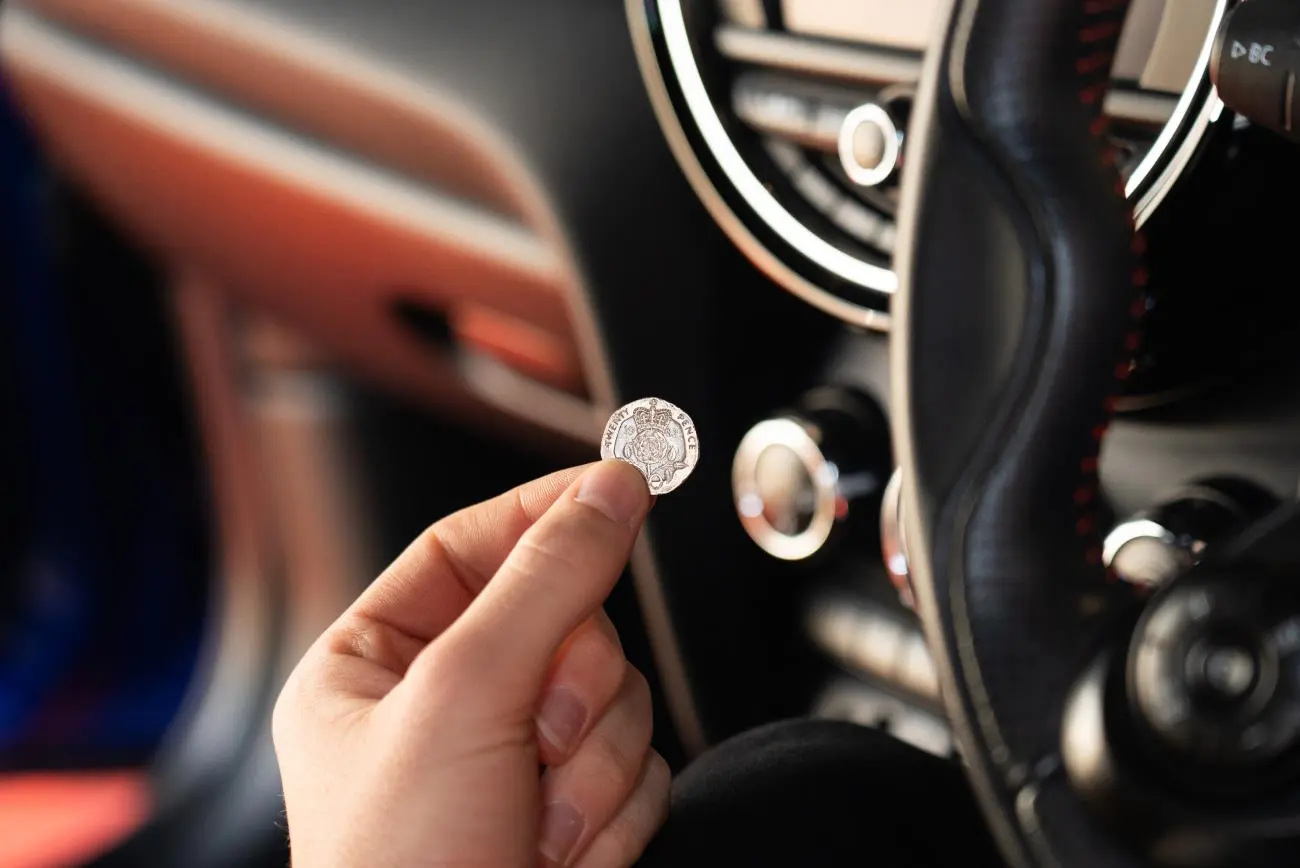
1. Keep a 20p coin in your car for quick tread checks.
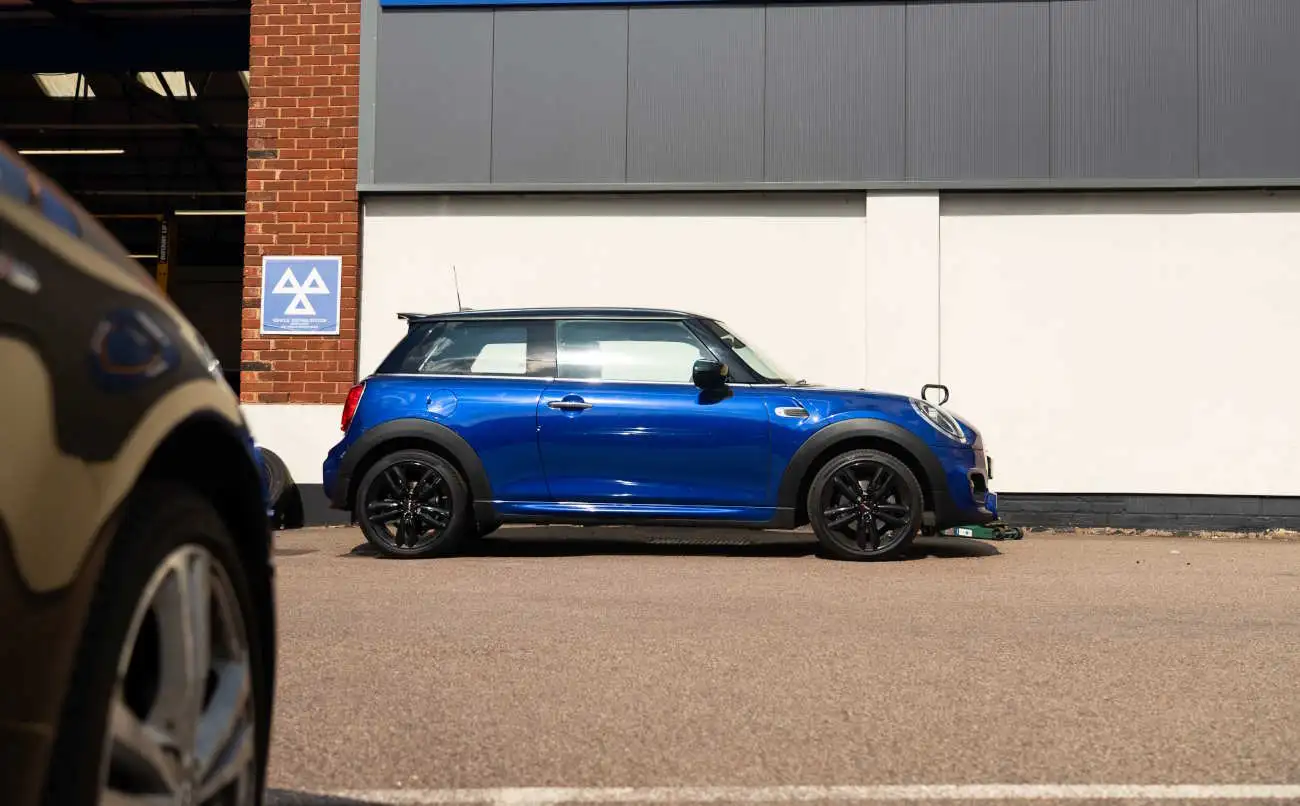
2. Ensure your car is on a flat surface before checking.
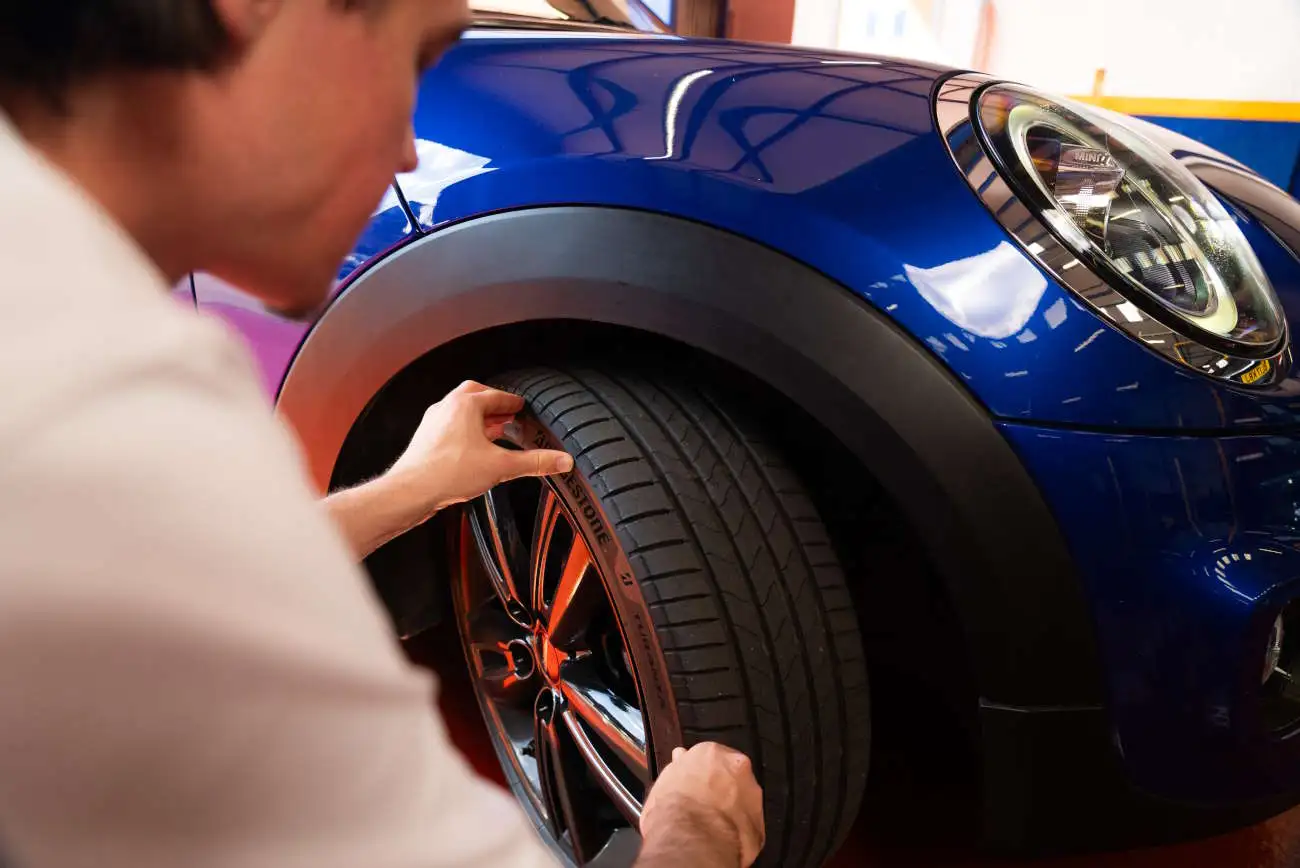
3. Look for the main tread channels on your tyre.
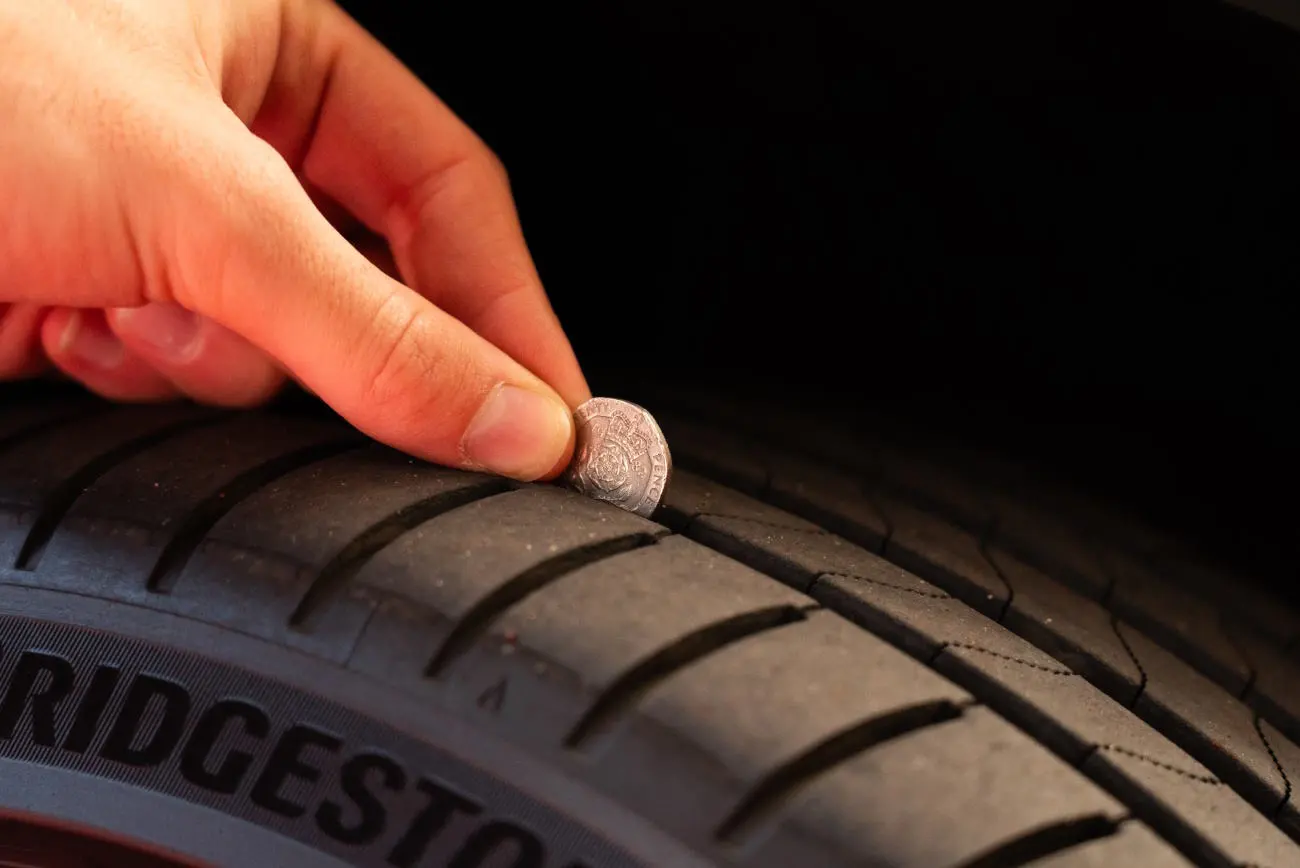
4. Place the 20p coin into the tread grooves at different points around the tyre.
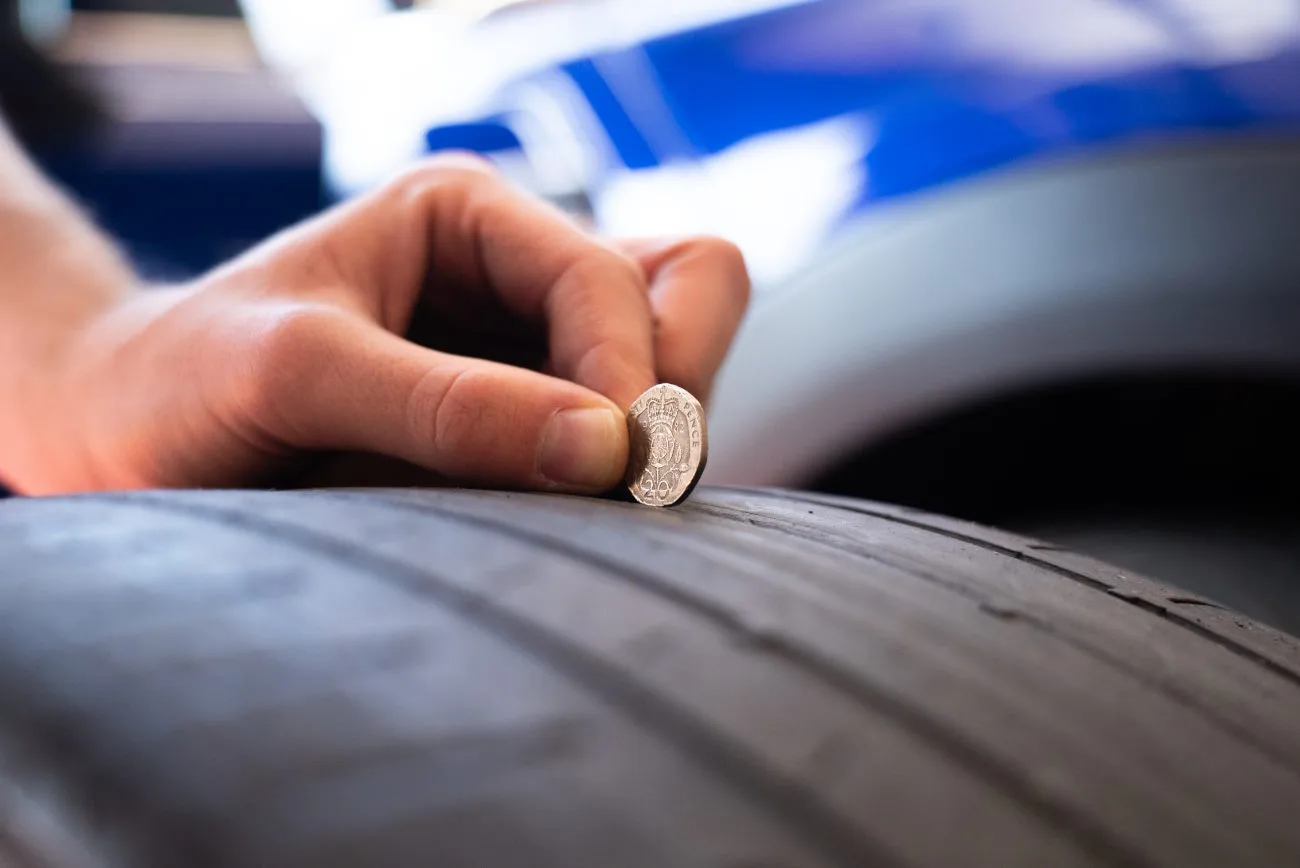
5. If the outer band of the coin is visible, your tread is too shallow and likely illegal.
6. Perform the 20p test on each tyre to ensure consistency.
7. If your tyres have Tread Wear Indicators (TWIs), check if the tread is level with them.
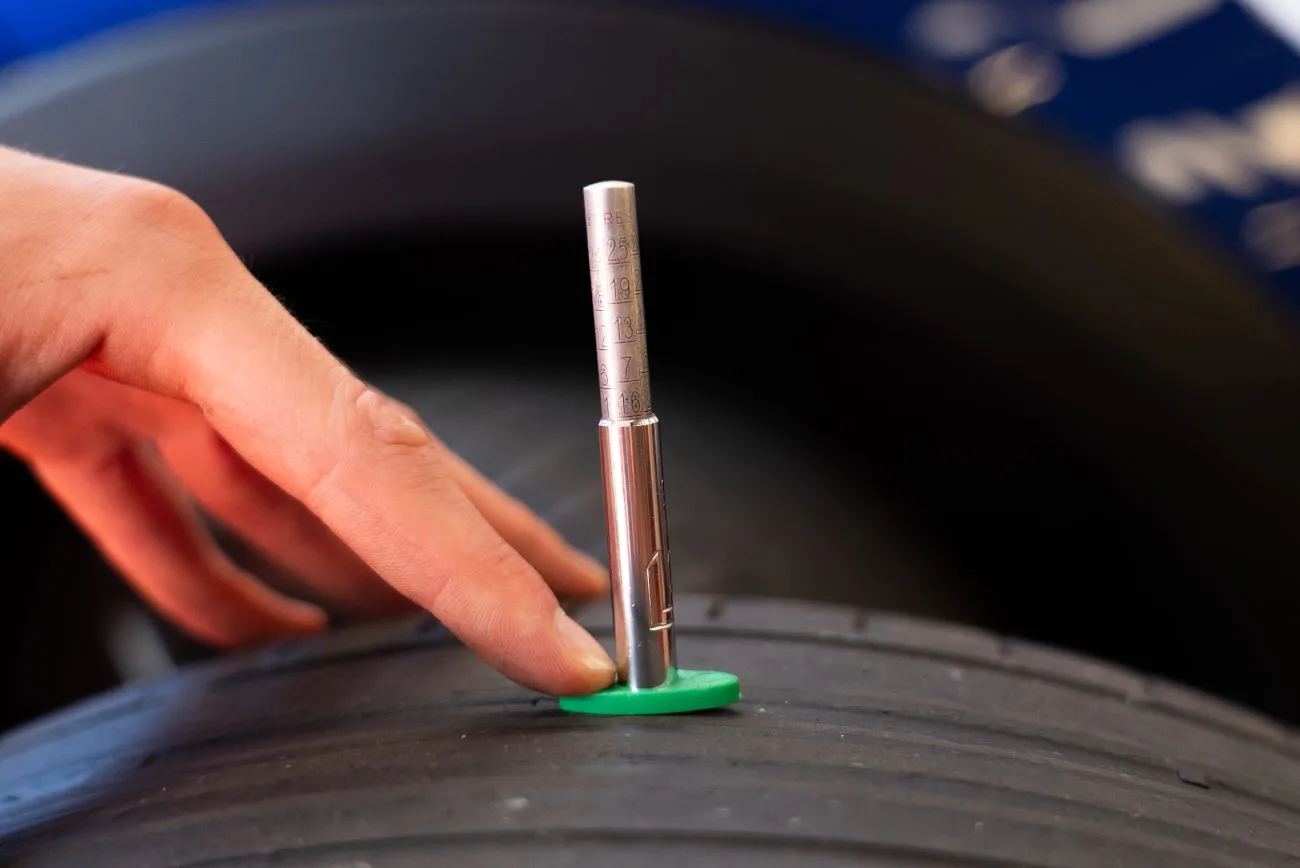
8. If your tread is below 1.6mm, replace the tyres as soon as possible.
9. Check your tyre tread depth weekly or before long journeys.

10. If youíre unsure about your tread depth, visit a professional for advice.






